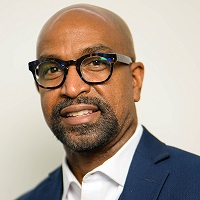
Percival Kane, Jr., MHA, Chief Operating Officer, University Hospitals Ahuja Medical Center
LinkedIn: Percival Kane, Jr.
LinkedIn: University Hospitals
Iain Jewitt, Chief Technology Officer, Purple
LinkedIn: Iain Jewitt
LinkedIn: Purple B Corp

As the healthcare landscape rapidly evolves, digital transformation is often seen through the lens of clinical systems, telemedicine, or data interoperability. Yet, one critical factor is often overlooked: the experience of physically navigating hospital environments. At University Hospitals (UH) in Cleveland, a forward-thinking partnership is challenging that oversight by reimagining how patients, families, and staff move through healthcare spaces.
The healthcare system is bridging operational efficiency and emotional ease, proving that technology can elevate, not eliminate, the human touch in healthcare. With thoughtfully deployed digital wayfinding and real-time data integration, UH is enhancing the healthcare journey with a clear focus on patient experience.
Reframing the First Impression: Navigation as a Vital Touchpoint
For many patients, stress begins before they enter a doctor’s office, as confusion on sprawling hospital campuses can set the tone for an entire care journey. In today’s consumer-driven healthcare landscape, where patients expect the same level of service they receive from retail or hospitality brands, 69 percent of patients say they would switch providers for a better overall experience.
At UH, digital wayfinding is more than a convenience; it’s a strategic imperative. The smart space technology they’ve deployed powers a system of intuitive, real-time indoor navigation, helping patients arrive promptly, feel confident, and minimize appointment-related anxiety. With 30 percent of hospital visitors reporting confusion finding their way, this transformation is about more than efficiency; it’s about dignity and clarity in moments that shape the patient experience.
Smart Spaces, Smarter Workflows
While patient experience is a primary goal, UH also sees the operational benefits of real-time location services (RTLS). By tracking the movement of equipment, staff, and patients, the hospital can allocate resources more efficiently, reduce bottlenecks, and shorten wait times—ultimately creating a more responsive care environment. This data-driven orchestration is less about surveillance and more about coordination that empowers care teams.
Inclusivity by Design
One of the most important lessons from UH’s approach is that innovation must remain accessible to everyone. While many patients embrace digital tools, not everyone is comfortable navigating them. That’s why UH pairs technology with human assistance, ensuring volunteers and staff are empowered, not replaced by digital systems. The hospital’s “no pointing” policy ensures that those who need support receive it personally, while volunteers use wayfinding technology to offer guidance with greater confidence and compassion.
Looking Forward: A Blueprint for Compassionate Innovation
Digital navigation is just the beginning. UH is now exploring how Wi-Fi analytics, patient portals, and AI integrations might work in concert with physical navigation tools to create a holistically connected and personalized healthcare experience. As hospitals across the country grapple with staffing challenges, changing patient expectations, and infrastructure modernization, UH’s model offers a replicable path forward, where innovation is felt not only on the operational side but also in every patient-facing hallway and waiting area.
Healthcare technology should always serve human needs first. By reshaping how people physically experience care environments, UH is proving that smart space innovation isn’t just a logistical upgrade; it’s a vital extension of compassionate care.
